Particular taste due to the combination of the ingredients, aromatic and spicy. The infusion is a drink for all tastes and for every season, excellent both consumed hot in winter and cold in the summer heat. Recommended when it is hot for its refreshing and rehydrating qualities, it represents a pleasant, delicious break.
Ginger, orange and cinnamon infusion: properties and benefits
This infusion has antioxidant properties that promote our well-being thanks to the presence of beneficial substances and minerals present in orange peels, ginger and hibiscus (karkadè).</ p>
Ginger is famously used in infusions for regular digestive activity, and for its qualities that help purification. A natural detox activity also supported by cinnamon, which promotes gastrointestinal activity and correct carbohydrate metabolism.
This infusion is also an excellent substitute for sugary drinks, with its satiating flavor due to the presence of apple and hibiscus, with few calories. The benefits of orange peels also concern the supply of elements useful to the immune system, together with hibiscus and rosehip. Furthermore, orange and hibiscus give benefits for the drainage of liquids and the functionality of the urinary tract - useful for the mixture always in detox function.
Origins and history of cultivation
The ginger plant has uncertain origins, but is believed to come from Asia. It is likely that in ancient times the Indians and Chinese cultivated ginger as a tonic root, present in their diet for over 5,000 years. Its rhizome was exploited and is still used today, which contains an oleoresin rich in many bioactive components, such as gingerol - the main ingredient that gives the pungent taste. This plant is now cultivated in all humid tropical climates, with India representing the largest producer.
The orange is native to an Asian region between China, India and Myanmar. Its use in food is very ancient (the first mention of sweet orange dates back to the 4th century in China). The sweet orange is considered a hybrid between the pomelo and the mandarin, subsequently cultivated and spread to many other continents. To date, the orange is one of the most cultivated fruit trees in the world.
Natively from Ceylon (now Sri Lanka), cinnamon Cinnamomum zeylanicum is a plant known since ancient times. It is mentioned in Chinese writings from 2800 BC. and today it is still used to obtain the spice, considered exquisite for its warm and intense flavour. It is obtained by drying the bark in its internal part, which curls up to create the stick shape in which we find it on the market. In ancient times it was also used for embalming or for therapeutic uses, in addition to food and to preserve meat.
Fruits and flowers
The Malus domestica plant belongs to the Rosaceae family, and gives apples. It is a tree native to Asia, now widespread throughout the planet. The fruits vary in colour, pulp and size based on the many varieties.
Tropical plant, ginger is Zingiber officinale, of the Zingiberaceae family. It shows lanceolate leaves and white or yellow flowers. Its root, or rather the underground rhizome, offers an aroma rich in woody notes and sweet citrus fruits.
The sweet orange tree is Citrus x sinensis belonging to the Rutaceae family. It almost certainly originated as a hybrid between the pomelo and the mandarin in China. Numerous varieties of orange have been developed over the centuries, and sweet oranges are distinguished from bitter oranges.
The cinnamon tree is Cinnamomum zeylanicum, an evergreen of the Lauraceae family. Its bark yields the aromatic properties that create the spice of cinnamon. It grows in moist, well-drained soil, and reaches about 15 meters in height.
The hibiscus plant is Hibiscus sabdariffa, of the Malvaceae family. It grows in tropical and subtropical regions around the world. The leaves are consumed as a vegetable, the calyx and flowers are used as flavourings, colorings and for the preparation of hibiscus tea.
The rosehip is the fruit of the dog rose, a variety of the rose - a perennial plant of the Rosaceae family. Very widespread in Italy, it is also called scrub rose or wild rose. Rosehip is a false fruit, red in color, with a fleshy consistency. It contains the achenes, the true fruits.
Nutritional values of ginger, orange and cinnamon infusion
Among the active ingredients are presentacids (ascorbic, malic, citric and tartaric acid), tannins and mineral salts released by the ingredients. Other beneficial antioxidant groups are those in cinnamon, such as cinnamic acid and cinnamaldehyde. Ginger provides the compounds gingerols and shogaols, which combine with the antioxidant components of hibiscus, anthocyanins and other bioactive substances.
How to use the ingredients in the infusion
The infusion is obtained by placing approximately 3-5 grams of the ginger, orange and cinnamon mixture with water at 100 °C in a cup (250 ml).
Leave to infuse for 10 to 12 minutes before drinking. Add honey or sugar, if desired.
Ginger, orange and cinnamon infusion: side effects and contraindications
To obtain the benefits and avoid unwanted effects it is necessary to respect the recommended doses and not exceed the consumption of the infusion. Excessive intake can cause gastrointestinal disorders, headaches, irritation and stomach acidity.
How to buy our infusions
All Naturad'Oriente infusions are on sale in bulk, you can select the flavor and format you prefer in just a few clicks, proceed easily with the order by selecting the payment method that best meets your needs.


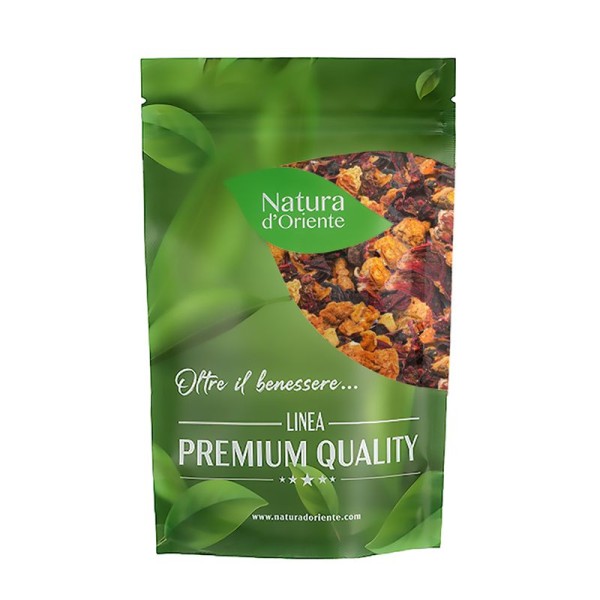








 No reward points for this product.
No reward points for this product.

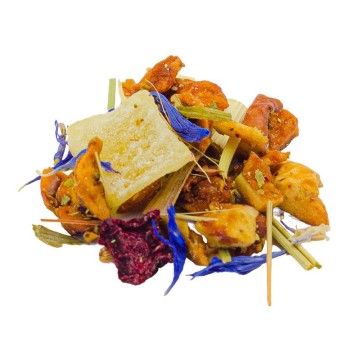

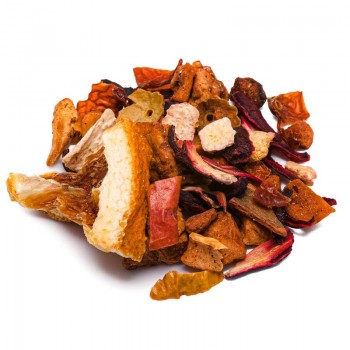


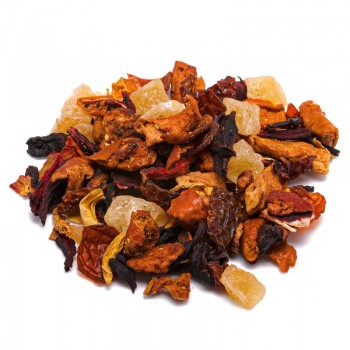

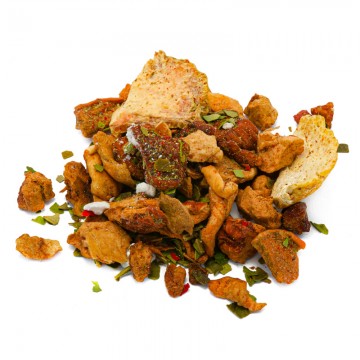



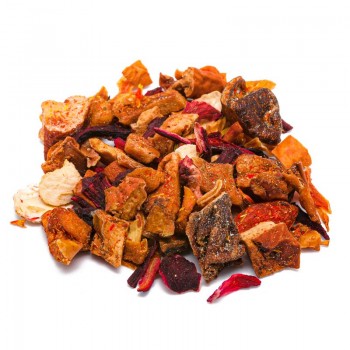


![infuso frutti rossi [Natura d'Oriente]](https://www.naturadoriente.com/3542-home_default/infusion-of-red-fruits.jpg)